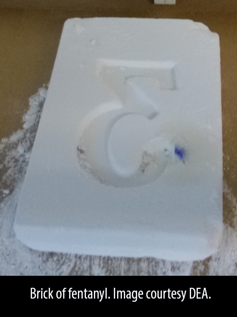What Two New Forecasts of Drug Overdose Deaths Missed
In the last few weeks, two major companies have published estimates and predictions of the number of Americans who will be lost to lose to drug overdoses. But both estimates seem to miss a piece of that big picture. And that piece may be essential if one is to truly gauge the impact drugs will have on the America of the future.
What were these two estimates?
The New York Times
On June 5th, the New York Times published a story estimating the number of drug overdose deaths for 2016. While the actual numbers won’t be available until the end of 2017, they extrapolated the number of deaths from existing information. While there were 52,404 total drug overdose deaths in 2015, the Times estimated that the 2016 figure will fall between 59,000 and 65,000.
The horrible truth is that every one of the last several years, the number of drug overdose deaths have been reaching record highs. If the New York Times is right, we will see a jump of between 112% and 124% when the 2016 numbers are compiled.

The STAT Report
In late June, STAT, a health and medicine journalism company, once again rocked the world of addiction and recovery with their forecast. Their report on the future of opioid overdoses estimated over in the next decade, we could lose 500,000 individuals—just to opioids.
From the 2015 opioid overdose losses of 33,091, we could hit 93,600 by 2027 if we maintain the rate of growth we’ve been seeing the last several years.
That means nearly three times as many devastated mothers and fathers, orphans, widows and widowers and close friends.
The STAT report goes on to describe the three vital areas of change that would enable us to reverse this trend and bring the numbers down by 2027:
- Ensure doctors prescribe fewer opioids (obviously only cutting out unnecessary prescribing)
- Utilize Prescription Drug Monitoring Programs in every state to ensure patients are not going to multiple practitioners to get enough pills to fuel an addiction
- Ensure health insurers enact reforms to increase access to drug addiction treatment.
So What Could These Reports Be Missing?
Neither report offers a complete picture of what our future will be like if we continue on the way we have been going. The New York Times article just takes a look at the new record we may have set last year. The STAT report only addresses opioids—prescription painkillers, heroin and the new illicitly-manufactured opioids fentanyl, acetylfentanyl, carfentanil and others.

Unscrupulous pharmaceutical manufacturers—many of them in Asia or Mexico—have smelled the blood in the water and are inundating the U.S. drug supply with these cheap, powerful illicit opioids, mixing them with heroin or just bulking up the drug with fillers and selling it by itself. They may call it heroin, no matter what its actual composition is. The more these drugs are sold to those addicted to opioids, the more people we’re losing to overdoses. The potency of these drugs explains that significant jump between the 2015 and 2016 numbers.
The STAT report does not factor in our losses to other drugs. Every year, we lose thousands of people to cocaine, methamphetamine and benzodiazepines (Valium, Xanax). The last few years, cocaine use has been growing, as have the number of deaths resulting from benzodiazepine overdoses.
On the other hand, both reports DO offer a much-needed wake-up call!
What Could Really Lie Ahead for Us?
Opioids: STAT estimates that if nothing changes, we could, see 93,600 opioid deaths by 2027.
Cocaine and benzodiazepines: If we see a slight growth in cocaine and benzodiazepine use each year, we could see losses of 8,200 people to cocaine and perhaps 9,500 to benzodiazepines by 2027.
Other drugs: If our losses to all other drugs (for example, MDMA, synthetic cannabis, inhalants, dextromethorphan, ketamine and others) stay steady, we might lose another 6,000 people a year.
So what would that mean in terms of loss of precious lives? We could easily reach more than 115,000 deaths from all types of overdose by 2027.
We Must Act to Prevent an Intolerable Future.
Whatever it takes to prevent this increase in overdose deaths is what we must do.
What else must be done in addition to the three changes proposed by STAT?

- Prevent young people from ever starting to use drugs. ANY drugs. Because once it’s acceptable to a person to use one drug, it’s so much easier to ease into using others that may be plentiful in the environment.
- And ensure that addiction recovery helps individuals learn how to live fully sober, productive lives. In the Narconon drug rehab program, we help each person gain the skills needed to make sober choices every day. Sobriety means NO reliance on drugs or other substances. When a person must rely on an addictive substance like methadone or buprenorphine, he does not experience life fully drug-free. Our graduates do achieve that.
For more than fifty years, we have successfully taught our graduates to enjoy life 100% drug-free. To learn how we get this result, call us at 1-888-391-7310.
Reference sources:
https://www.cdc.gov/nchs/pressroom/heroin_deaths.pdf


 ®
®